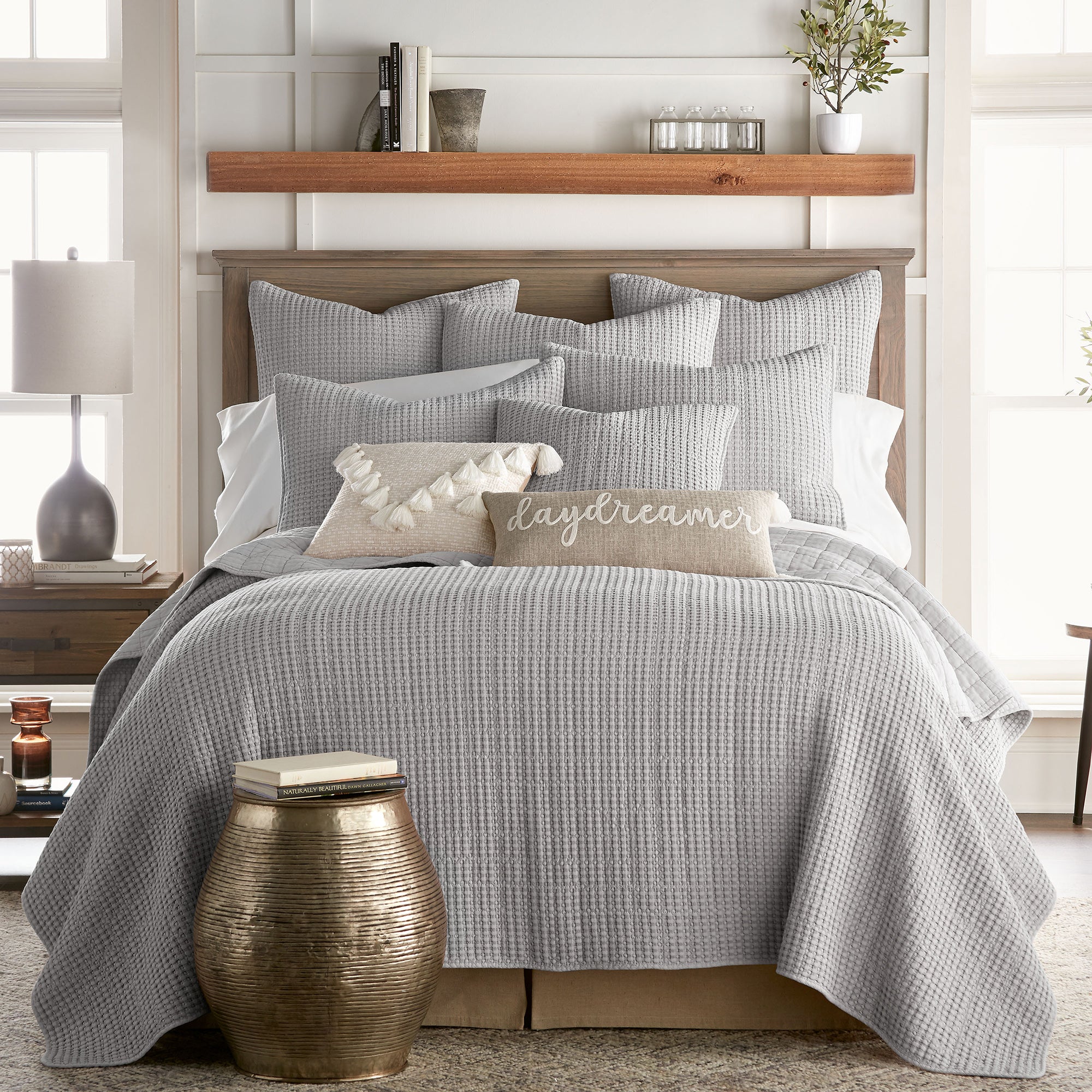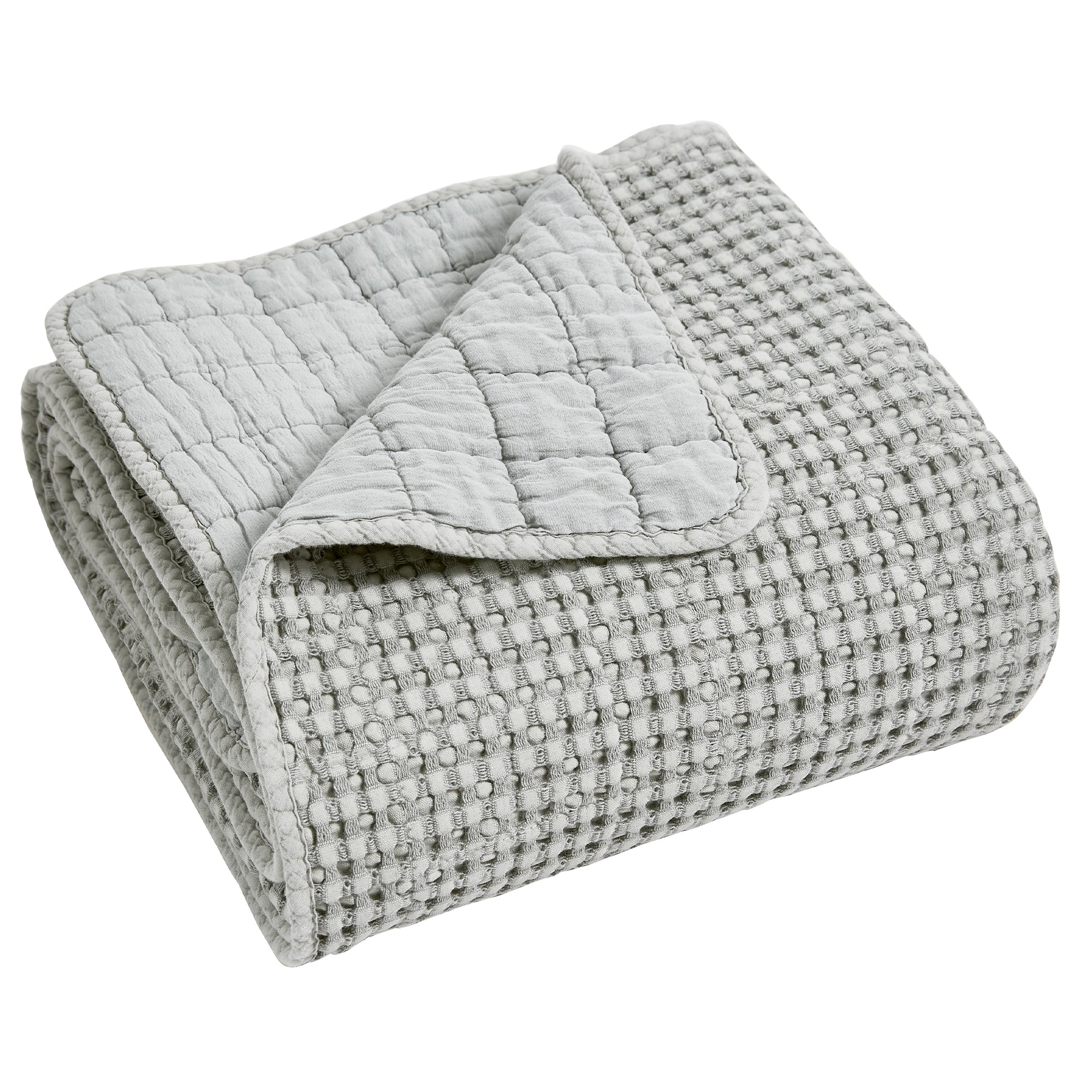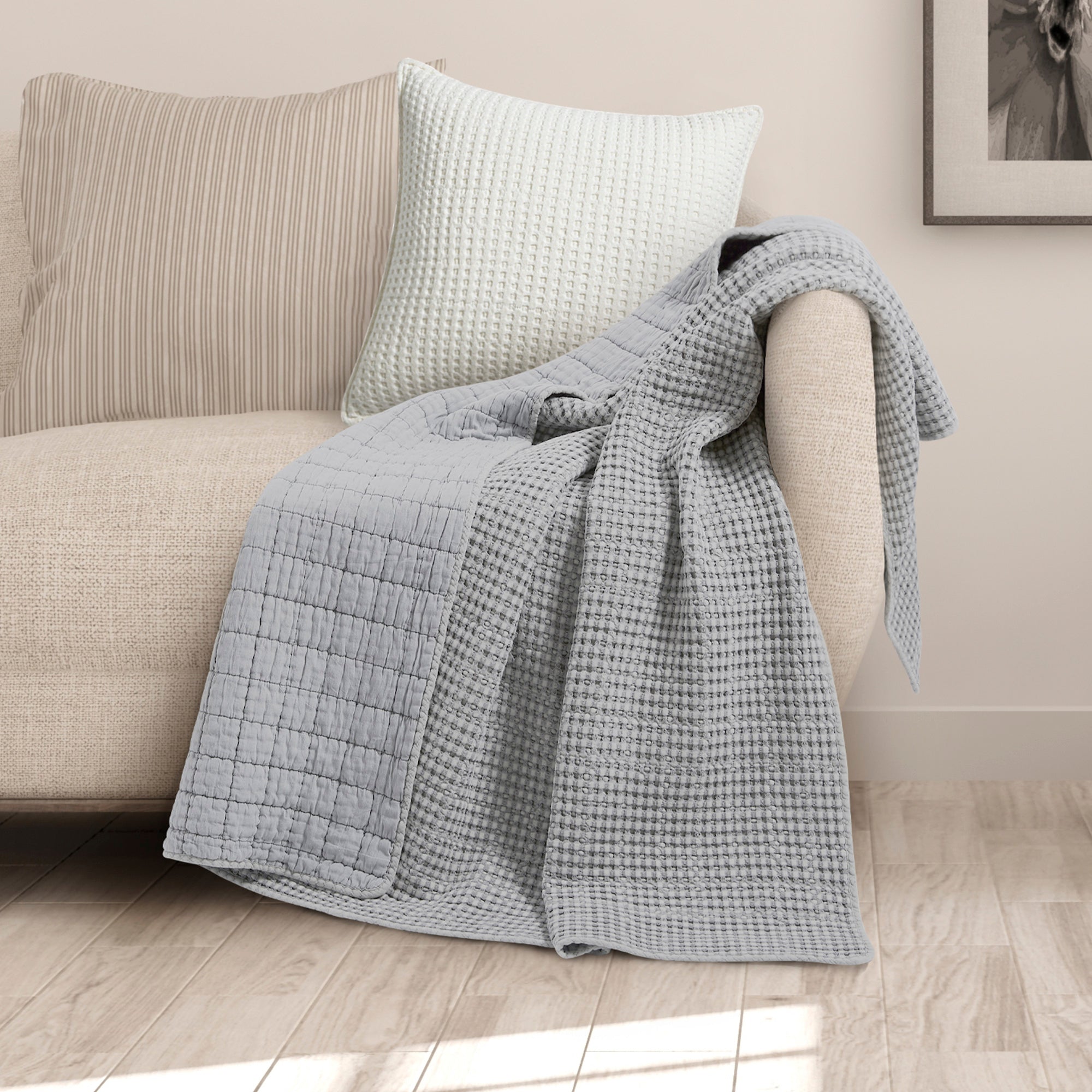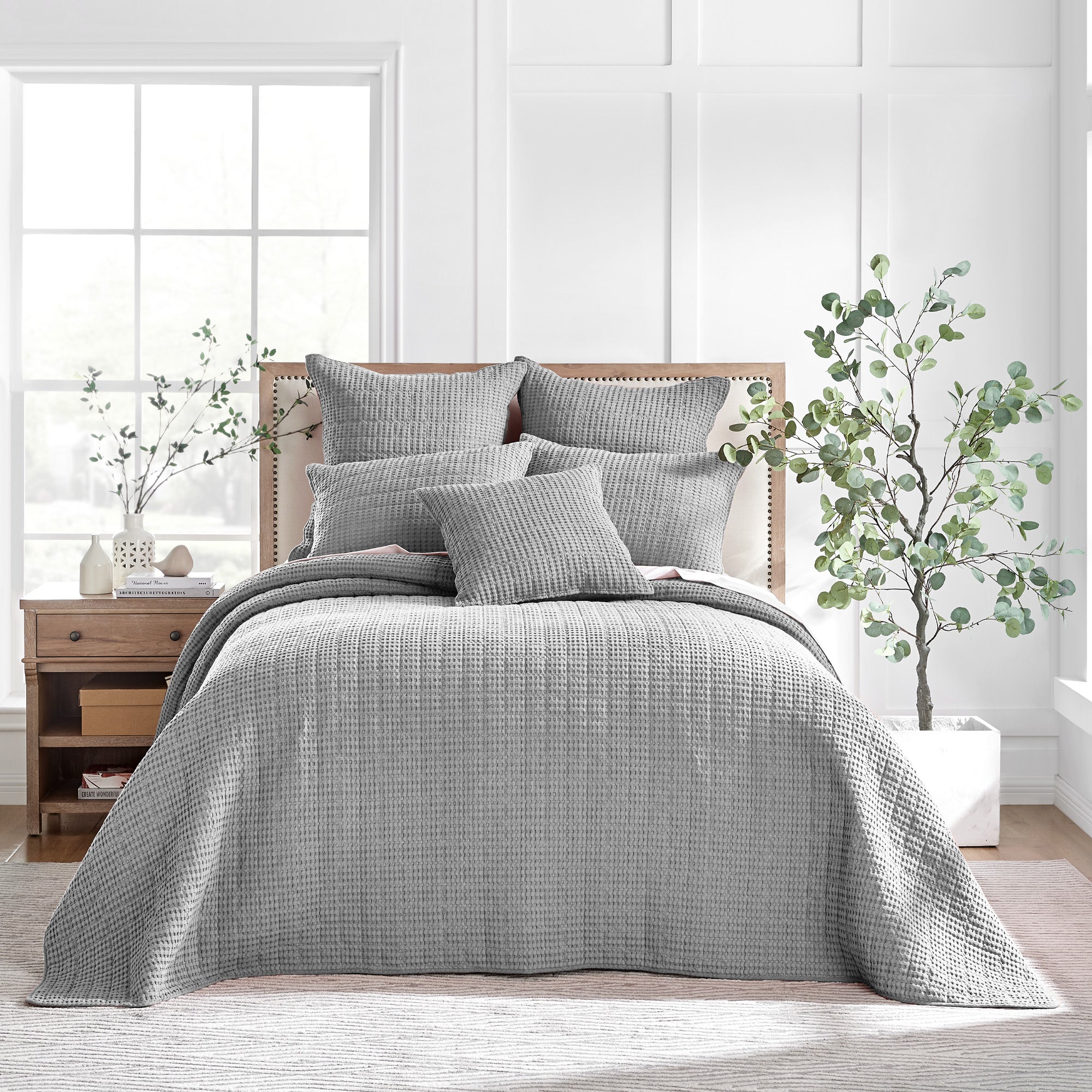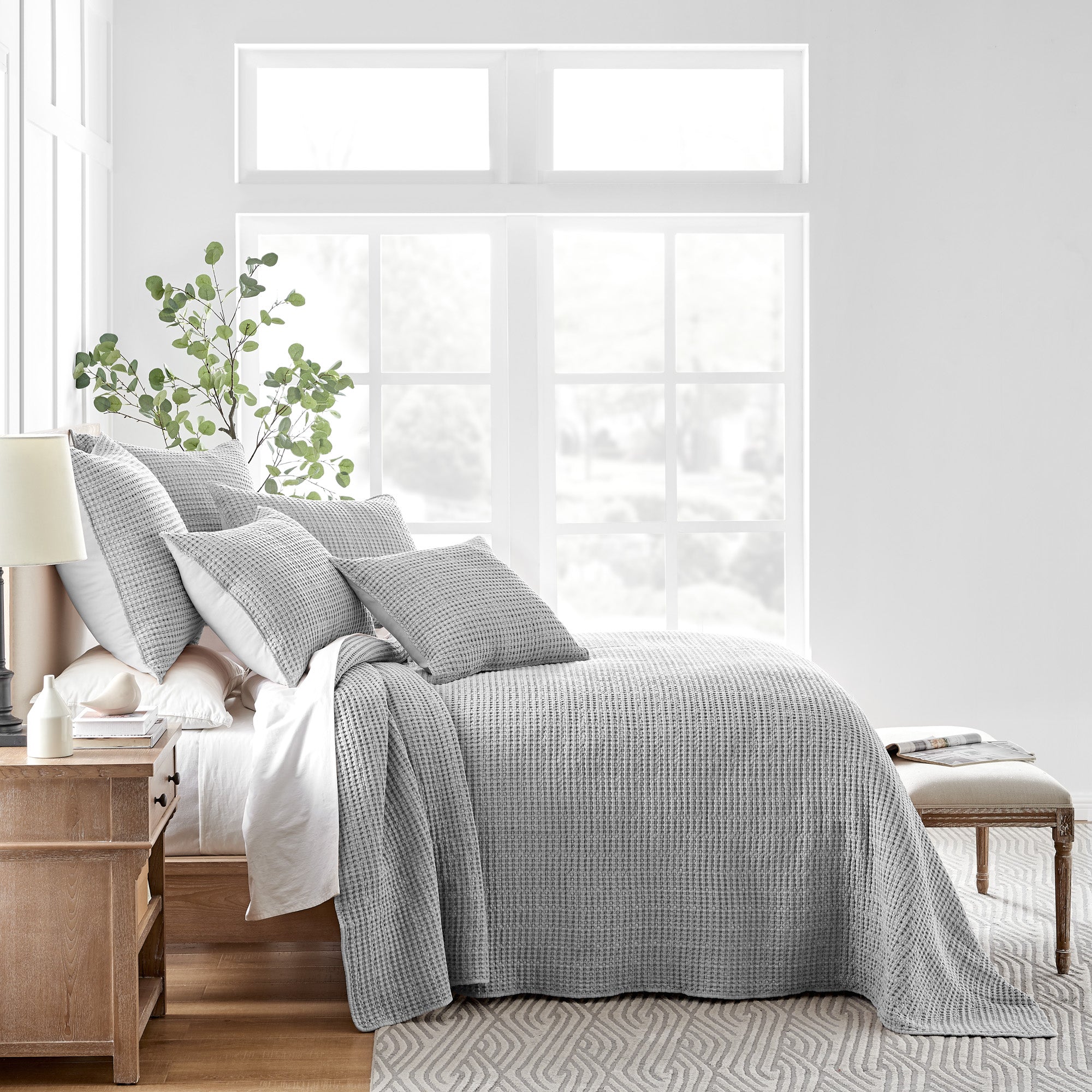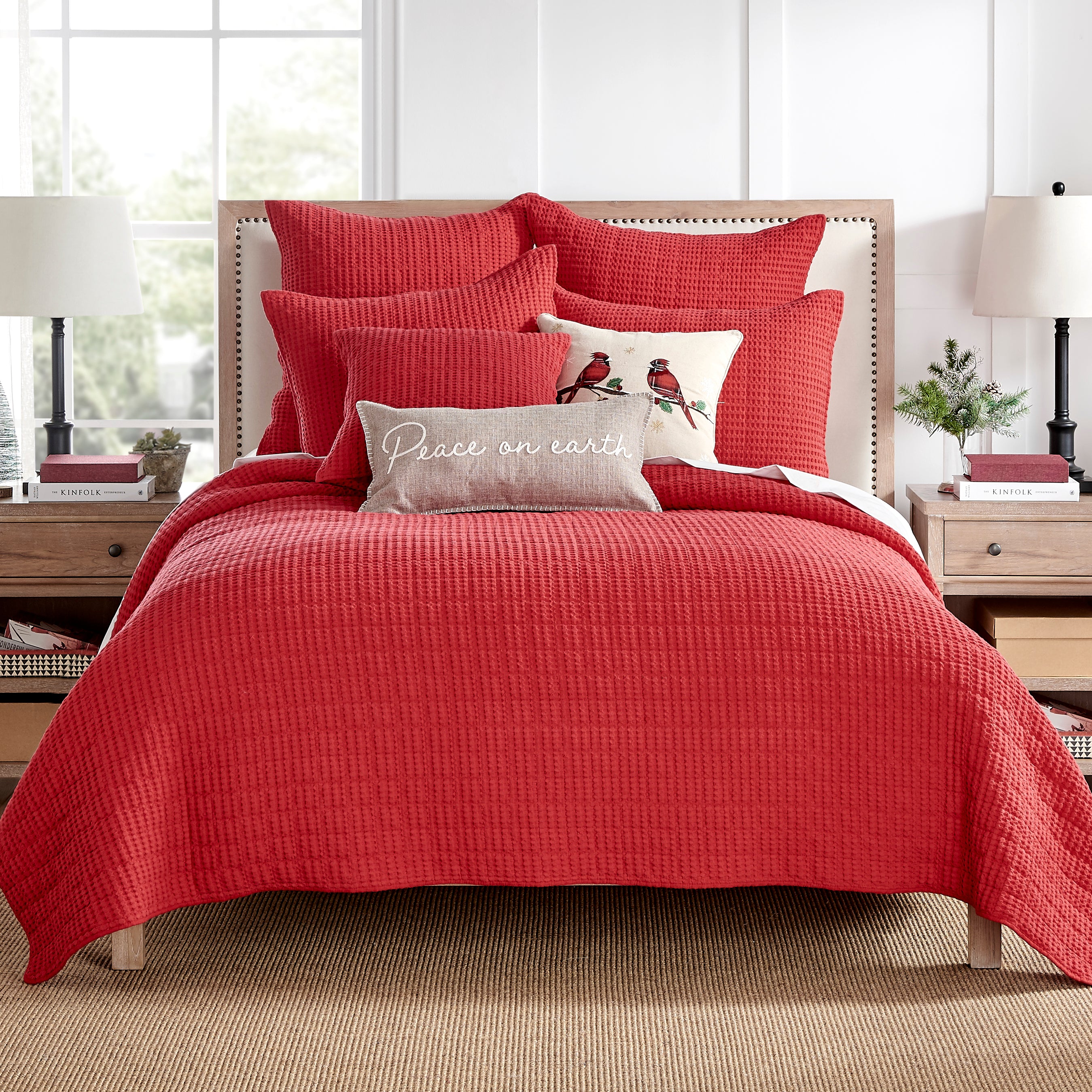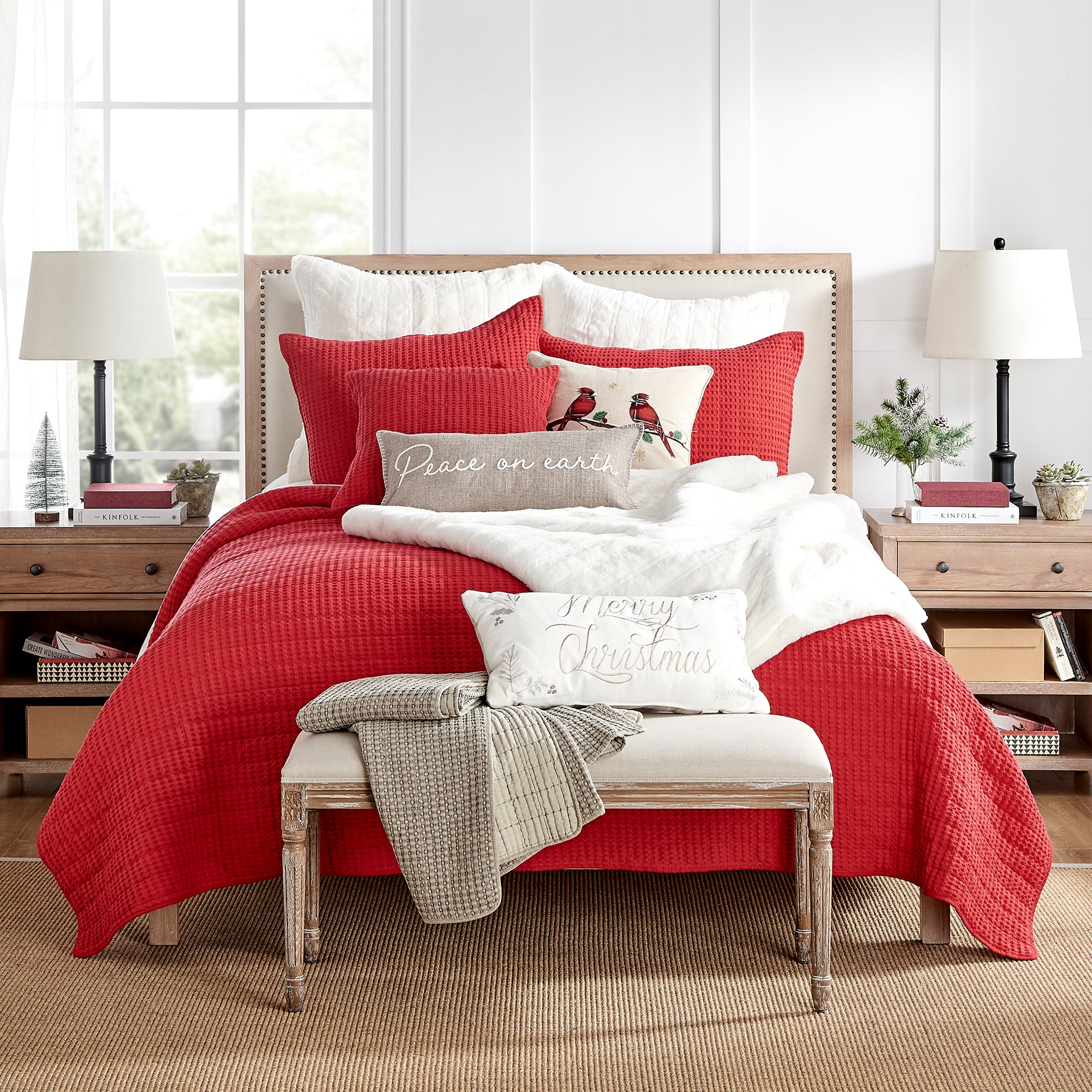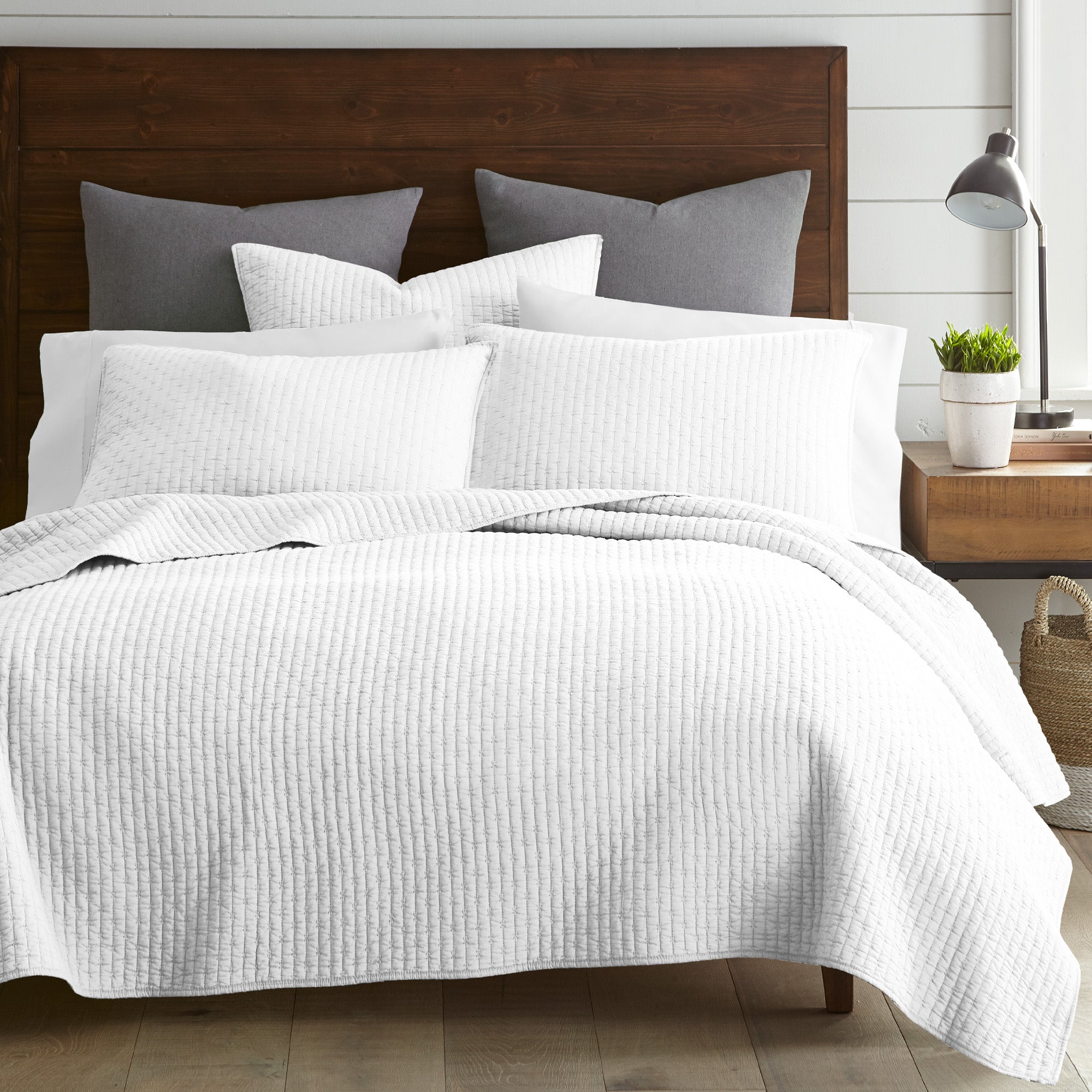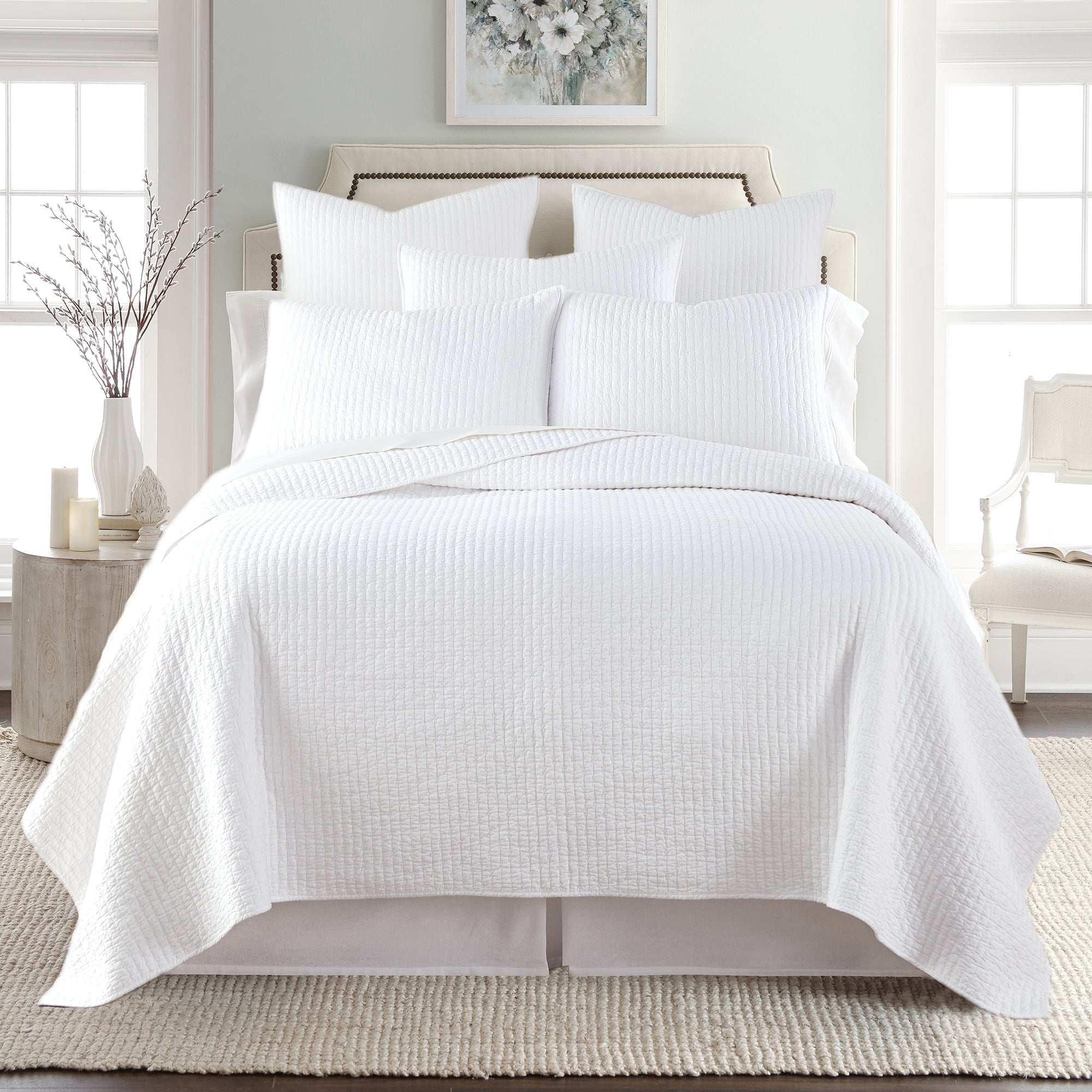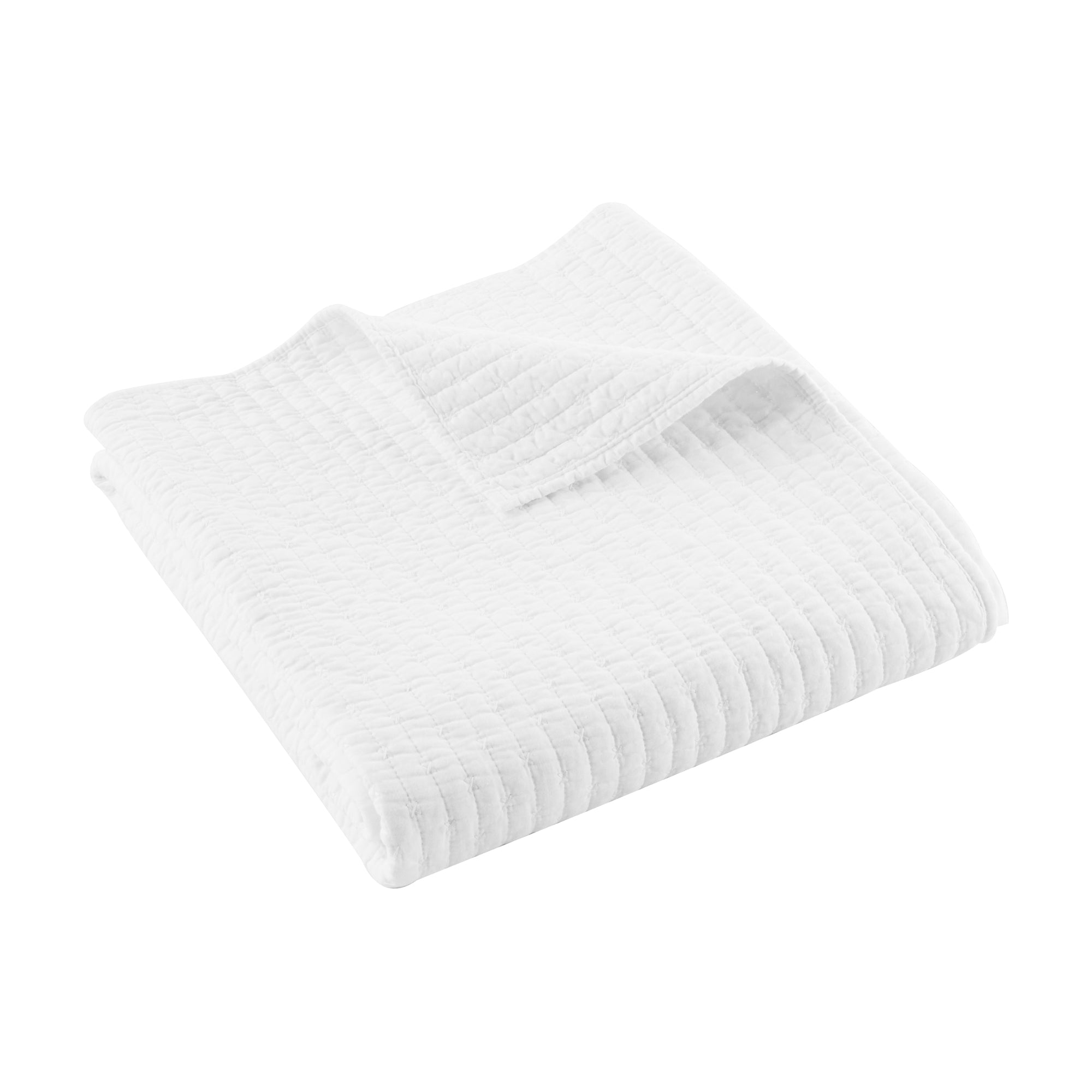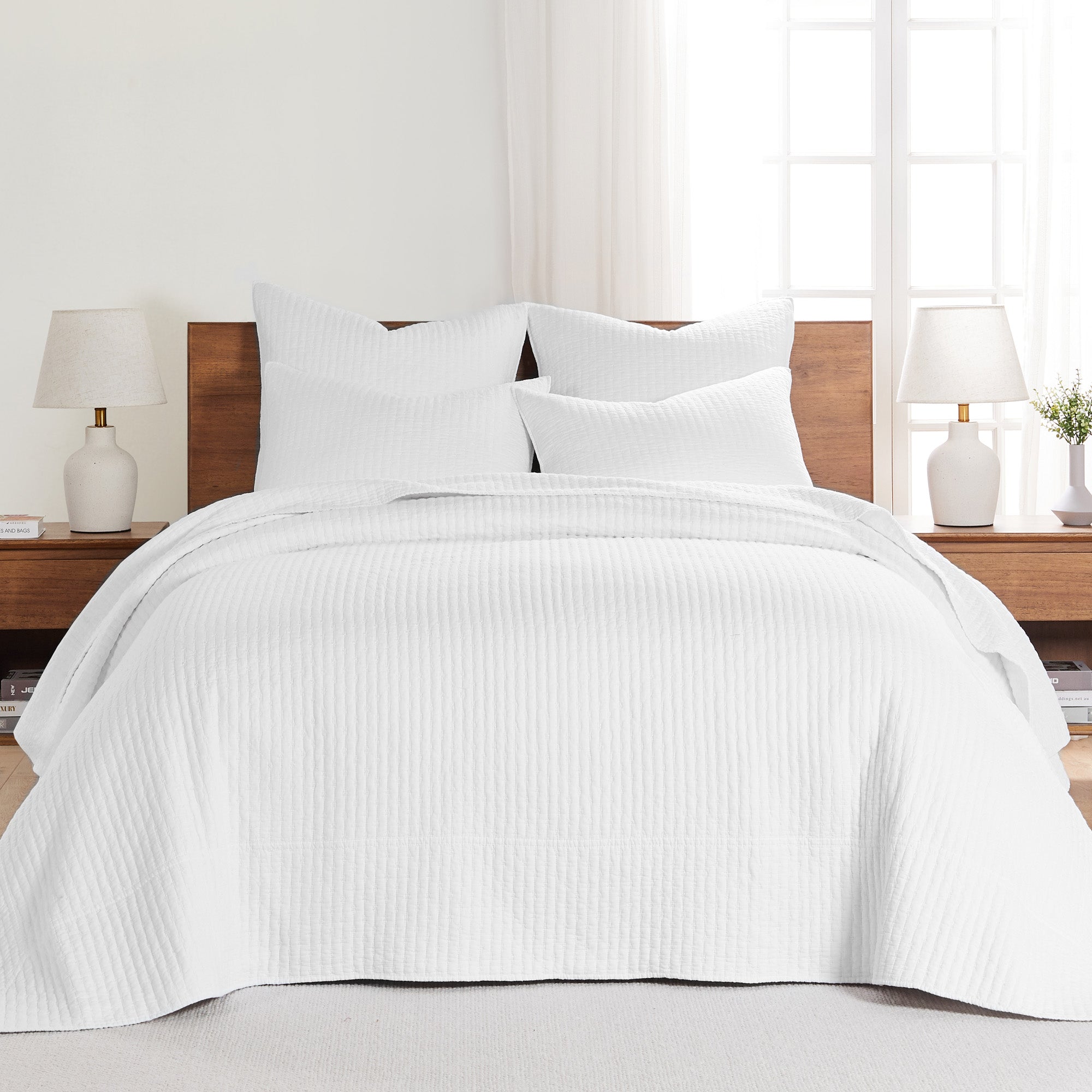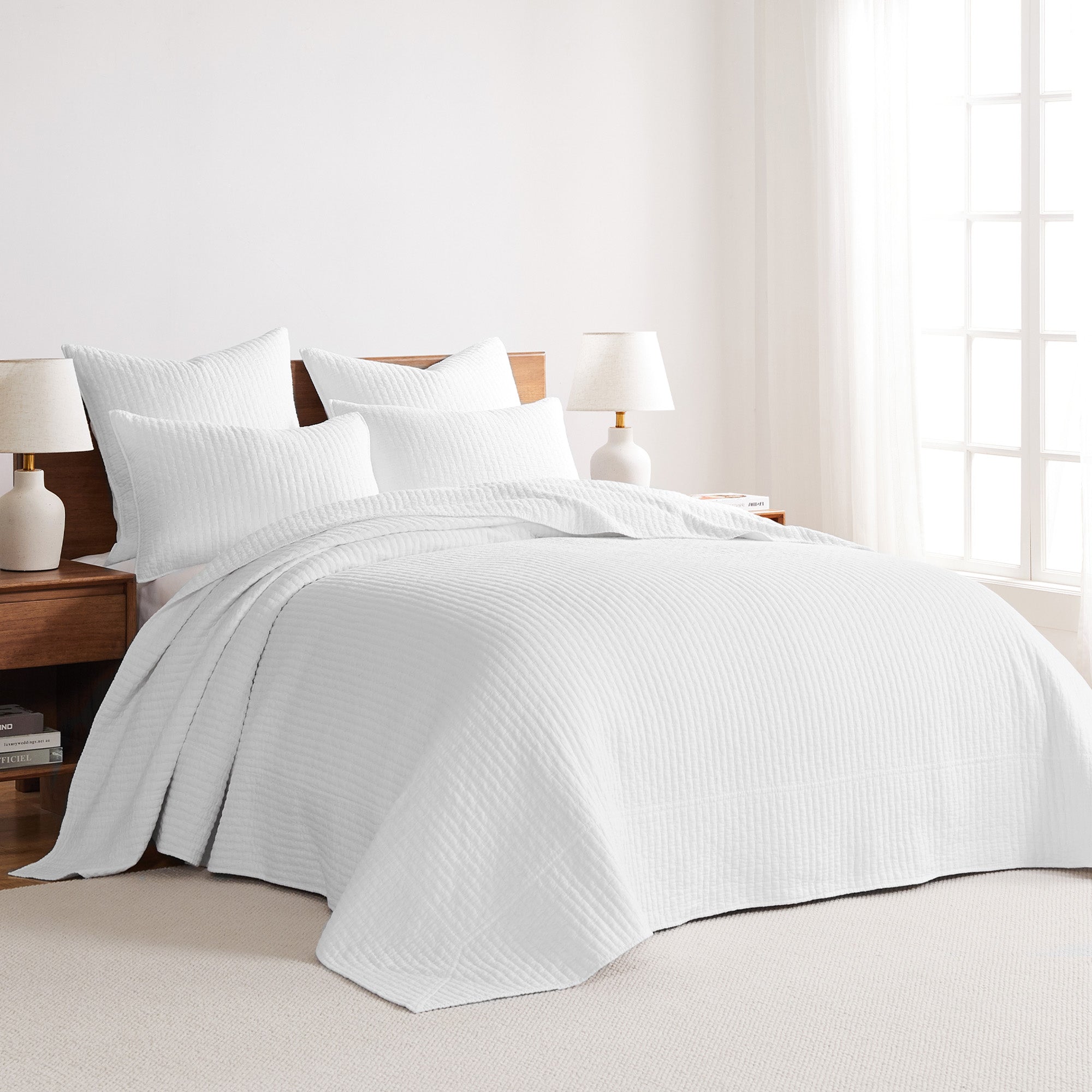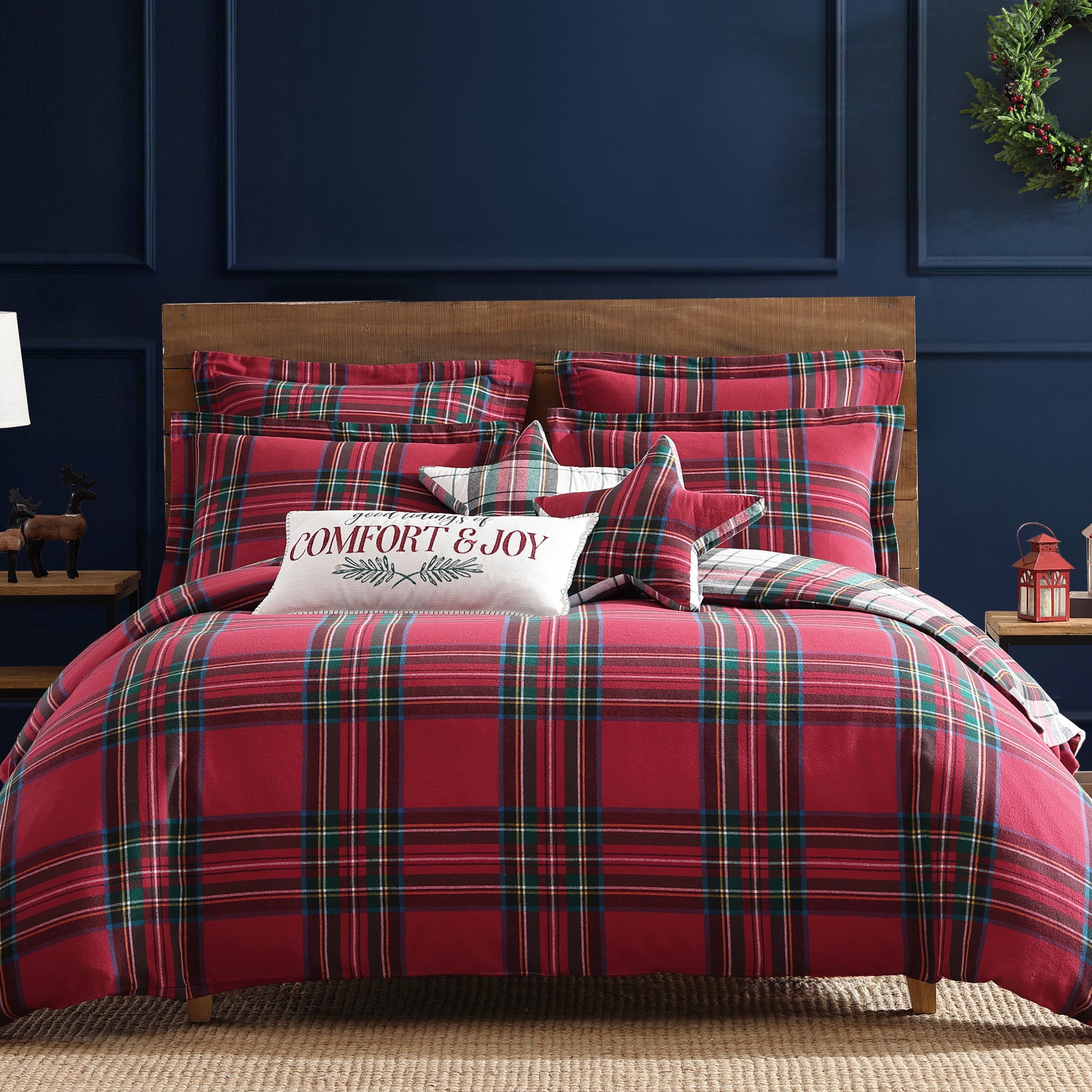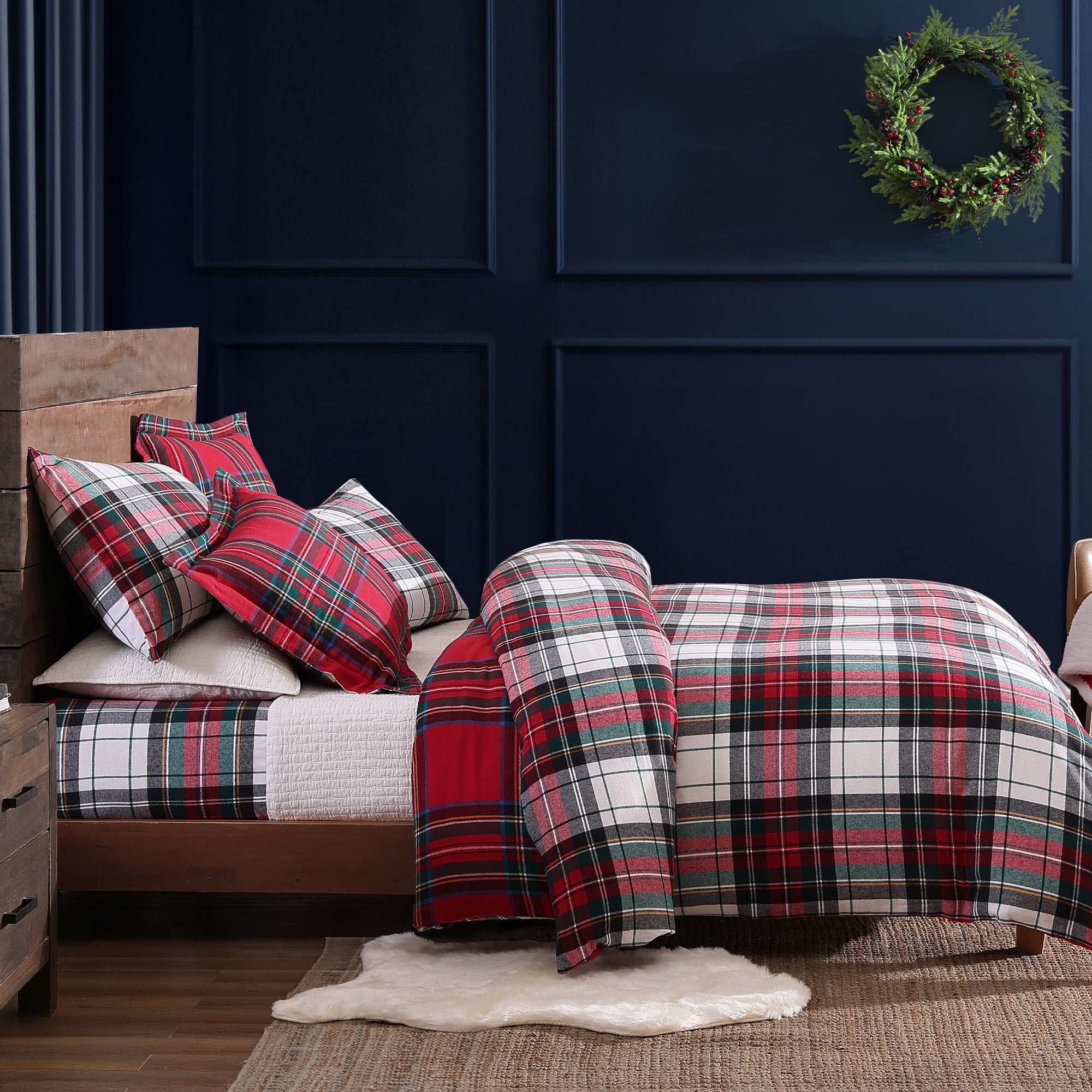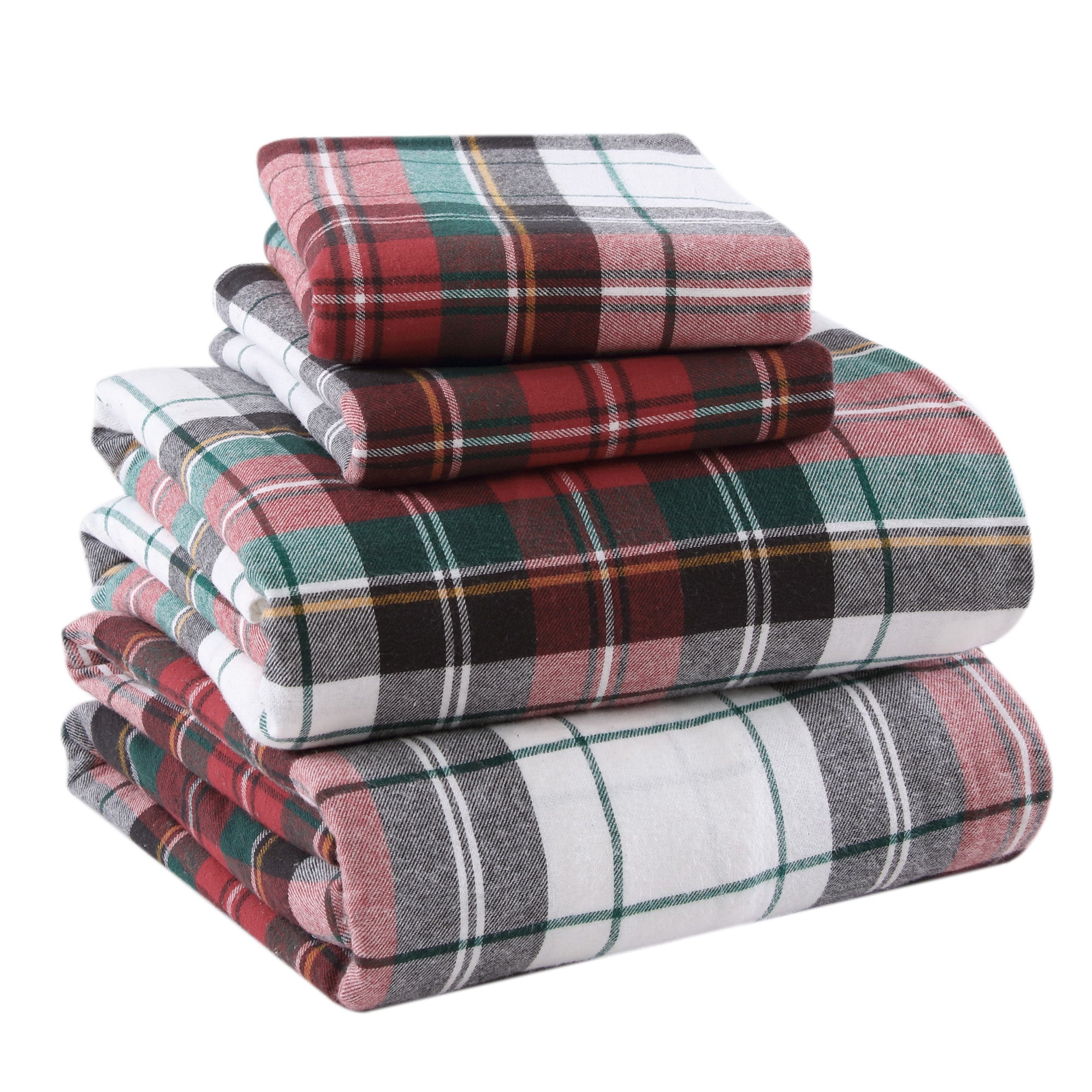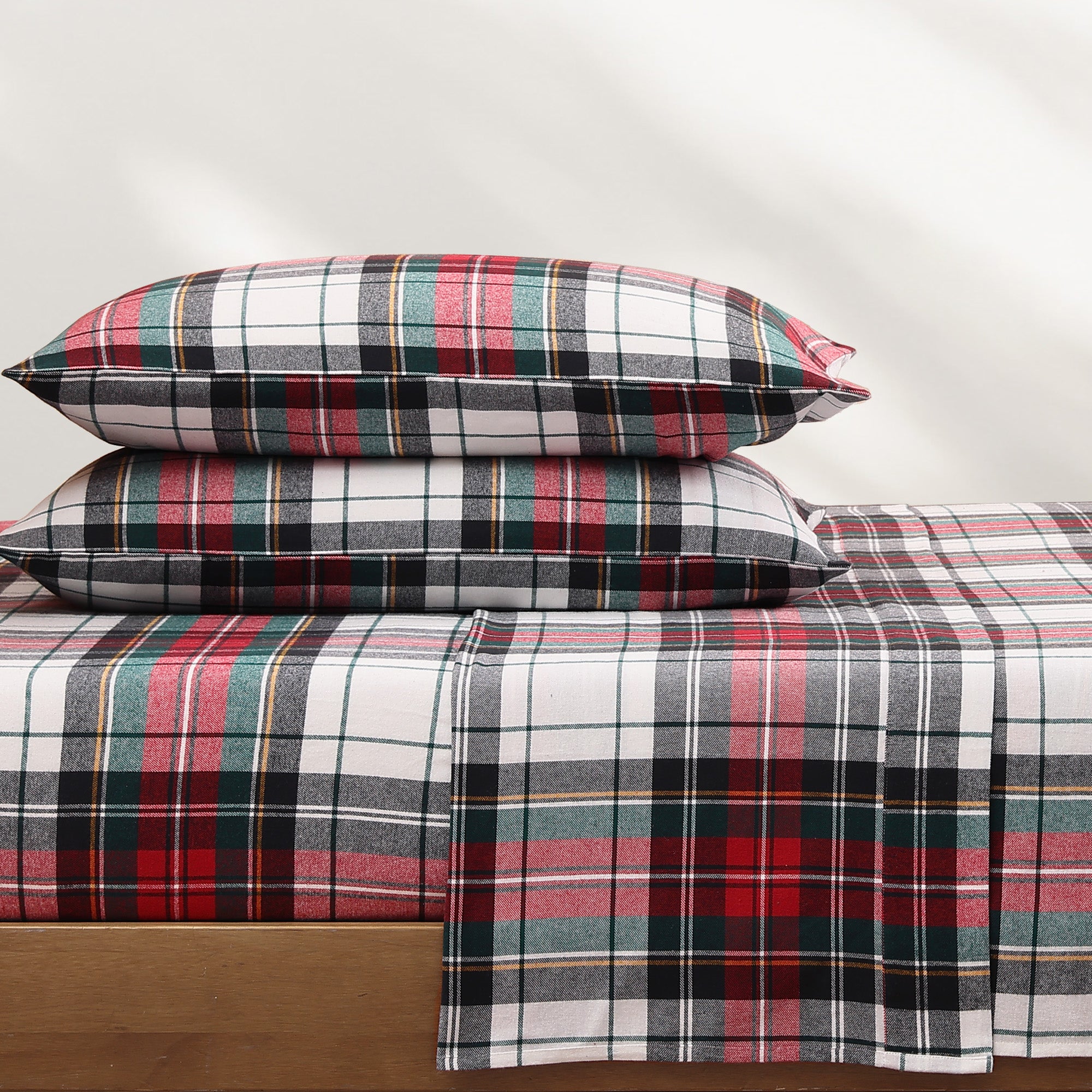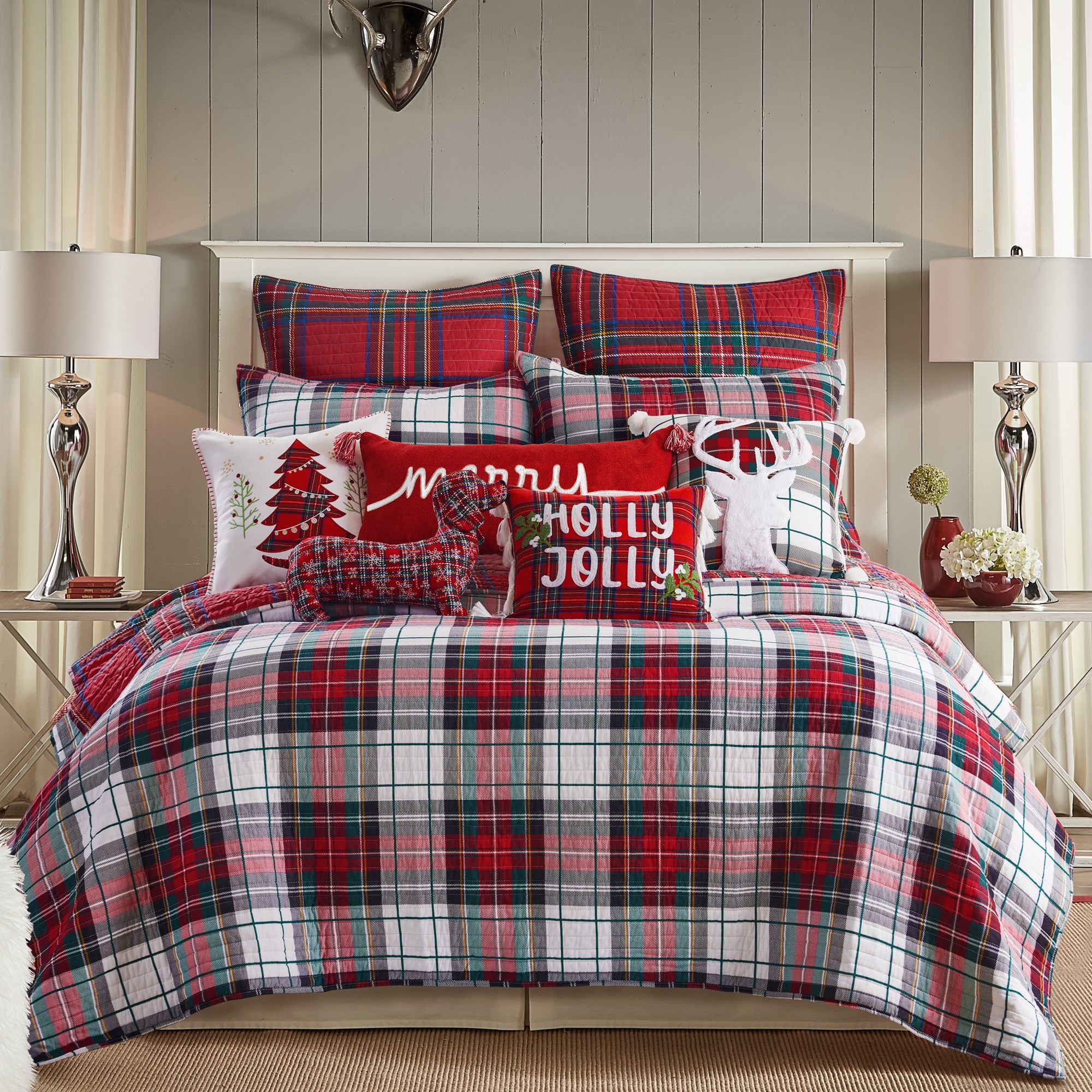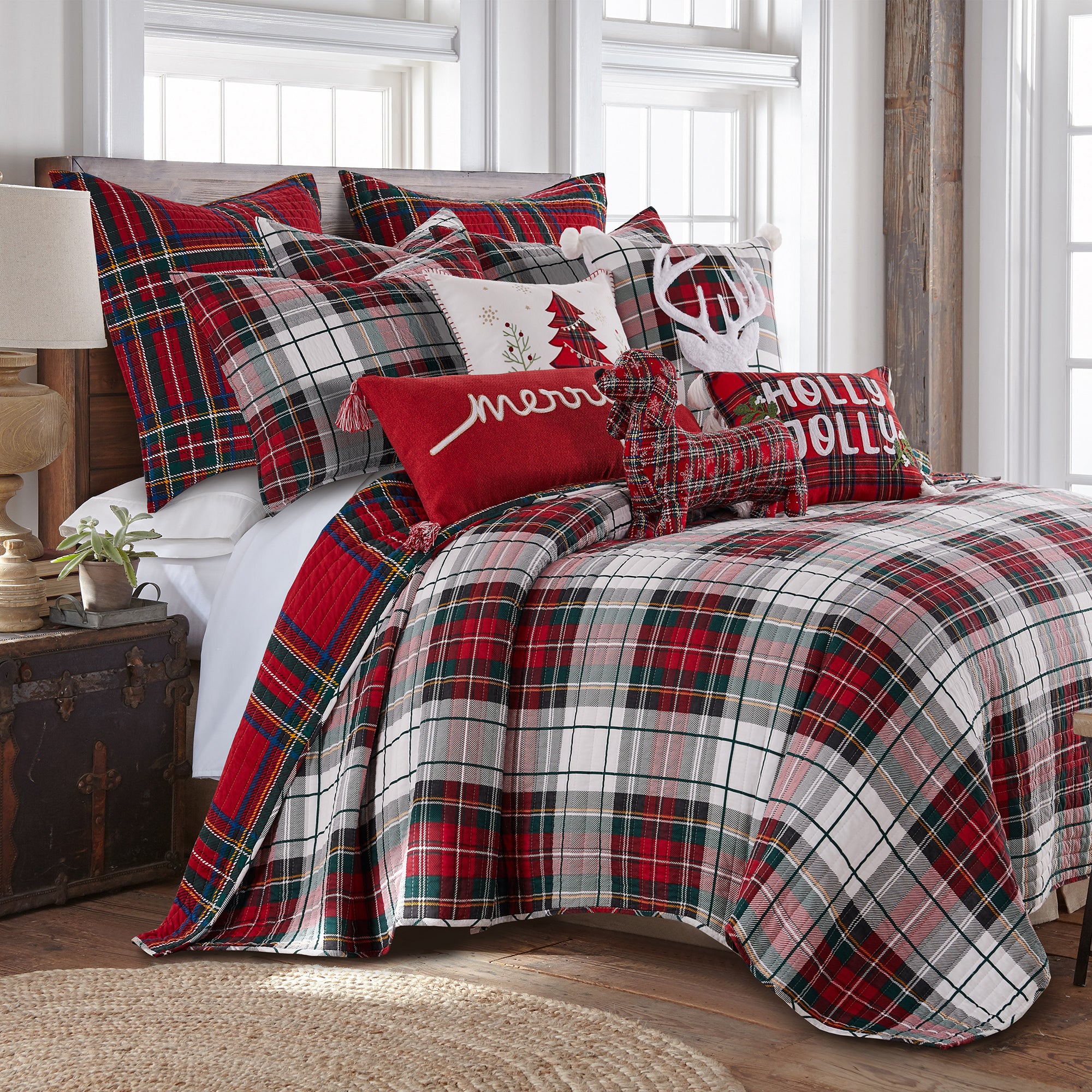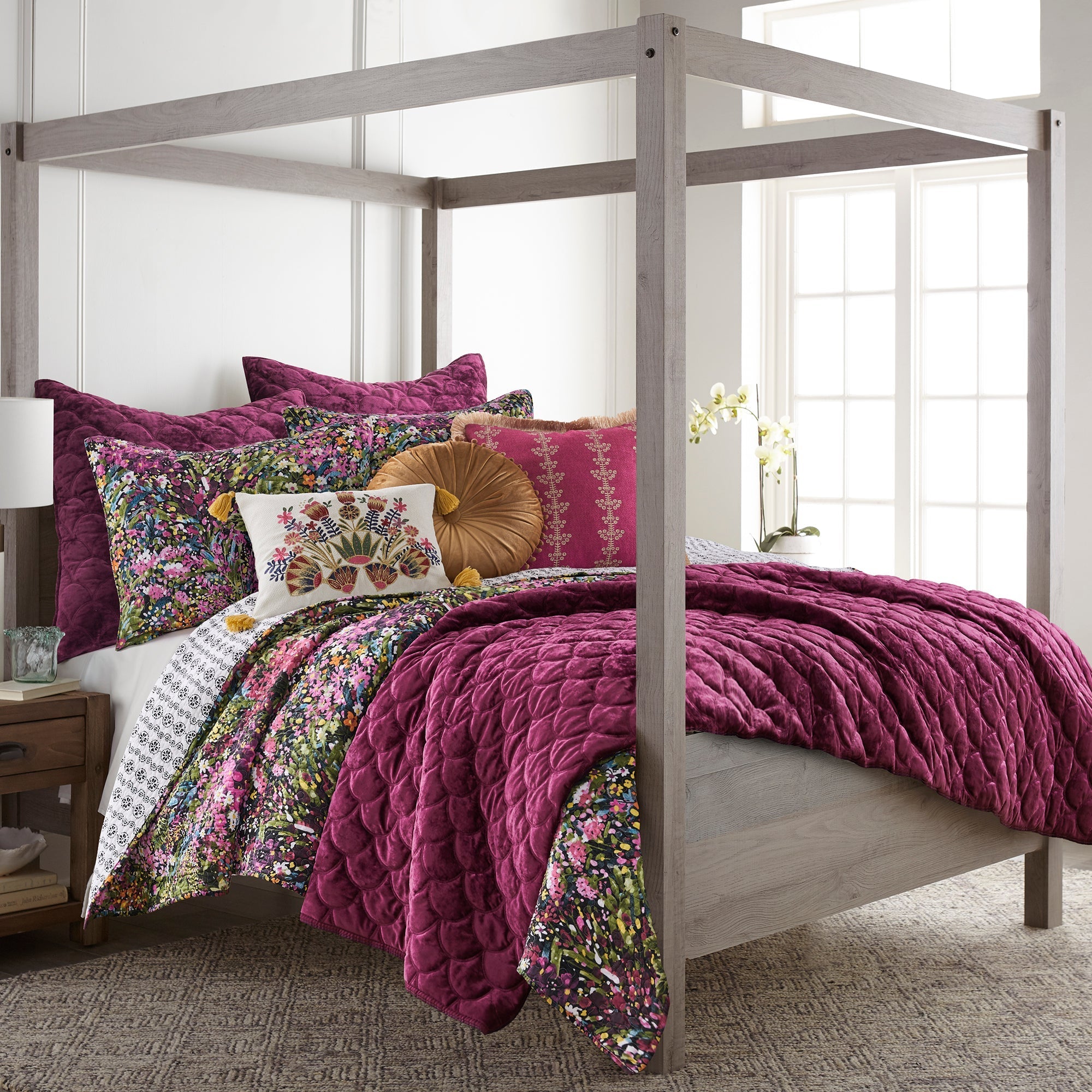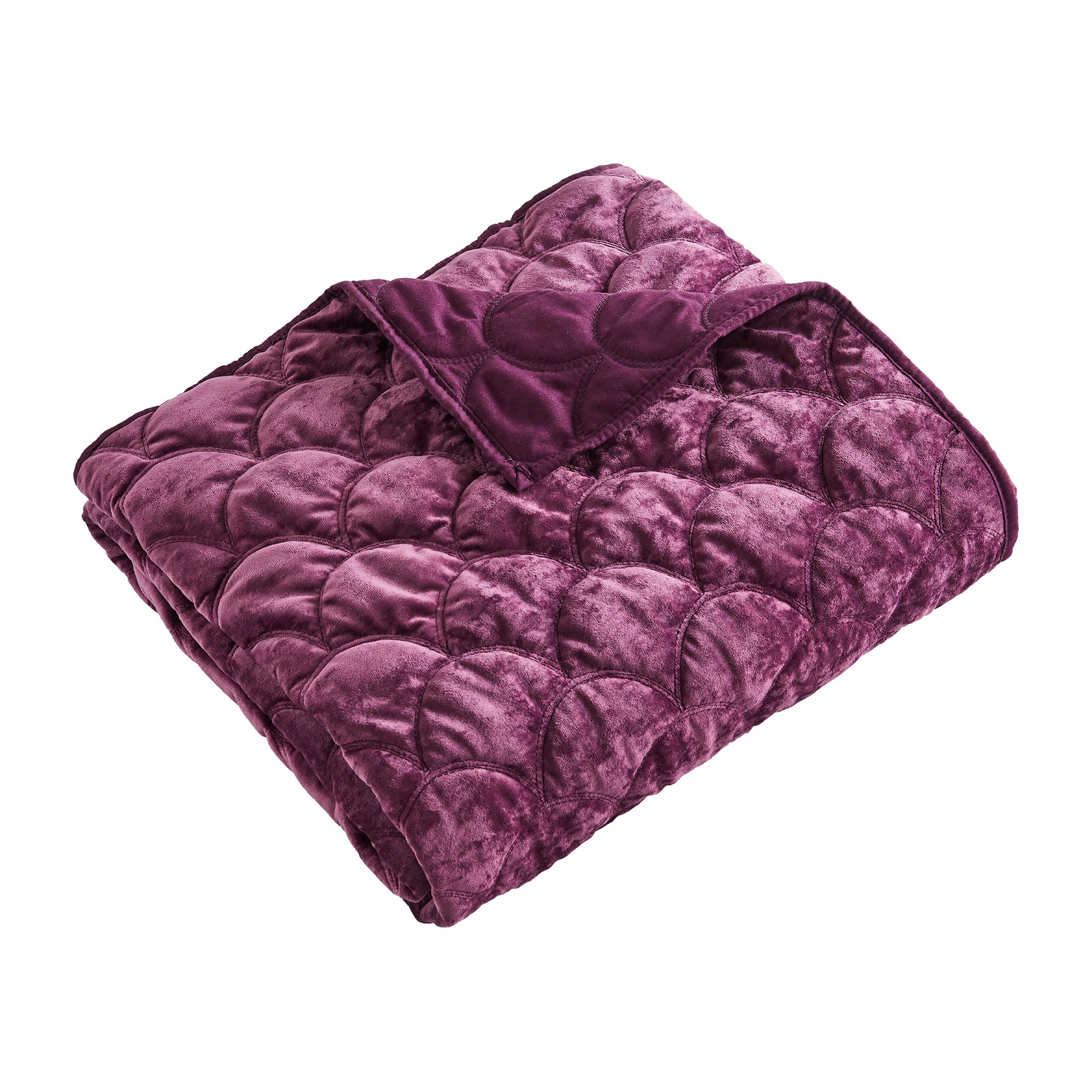Different Types of Bedding and Choosing the Right Bedding Type
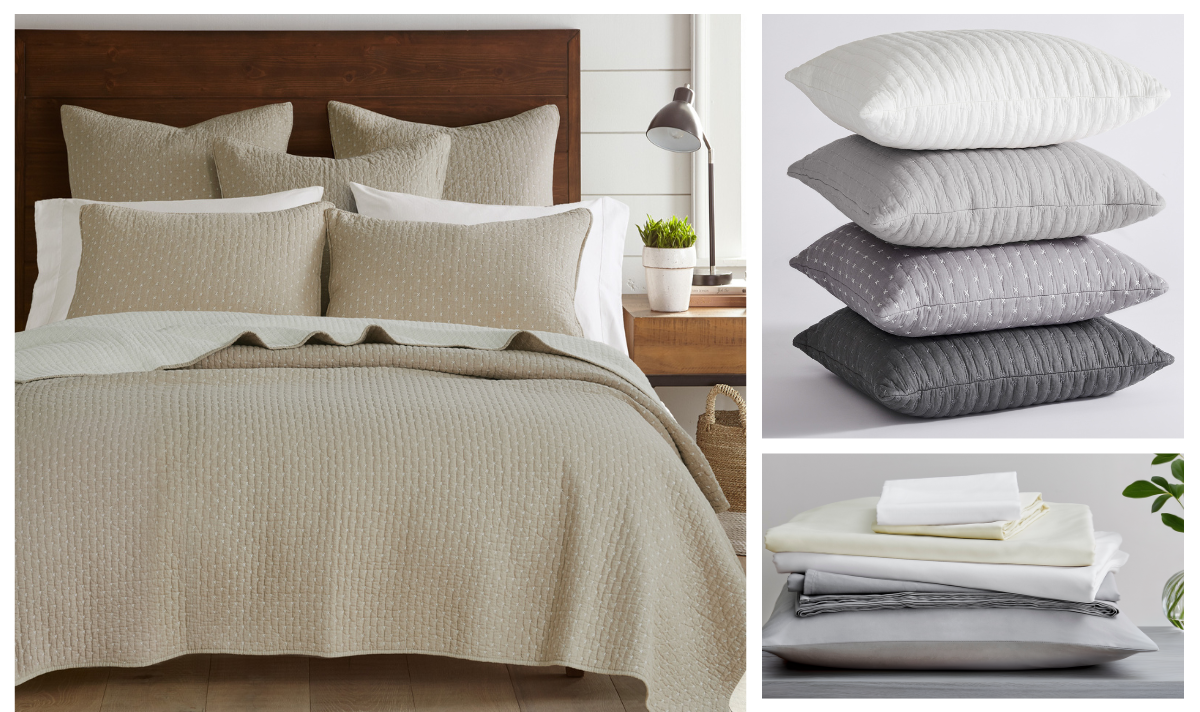
After a long, demanding day, there's nothing quite like sinking into the perfect bedding – a symphony of textures and colors that not only cocoon you in unparalleled comfort but also elevate the visual appeal of your space. Understanding the nuances of bedding is akin to deciphering the language of self-care; it's an art that combines the practicality of cozy materials with the aesthetics that resonate with your unique style. And the choices out there are endless and can be confusing. In an effort to make the choices clearer, this blog will explore some of the different ways to think about bedding - by fabrication and by texture. We hope you find it helpful as you consider what bedding you might choose.
"Bed linens are foundational elements that are going to be just as important for how they make you feel when you touch them as when you look at them"Mindy Matouk, designer
What Fabric Should I Choose?
Fabric choice is crucial not only for comfort but also for the quality of sleep one can achieve. The diversity in bedding materials caters to different preferences, climates, and budgets. We will first explore the characteristics of various fabric types that you are sure to run into as you decide what bedding to purchase - namely cotton, linen, microfiber, Tencel, bamboo, silk, and satin. Although we know there are other choices out there, understanding what sets these kinds of fabrication apart and how they can influence your sleep experience is a good place to start.
Cotton Bedding: Unraveling the Comfort of Natural Fibers
Cotton is widely appreciated for its breathability, softness, and durability. It's a natural fiber that excels in moisture-wicking, keeping you comfortable throughout the night. Cotton bedding comes in various weaves and qualities, including percale and sateen, offering a range of textures from crisp to silky (more on the differences on sateen and percale are covered in our blog). Organic cotton options also provide an eco-friendly choice for those concerned about environmental impact.
“I would like to go on record that the word ‘sateen’ makes my skin crawl, but I do like the way it feels after many washes. I remember my friend Gil Schafer saying he had an aversion to sateen, because he felt like he was slipping and sliding all over the place, but when they are washed multiple times, they develop a silken warmth that I find very comfortable.”Miles Redd, interior designer
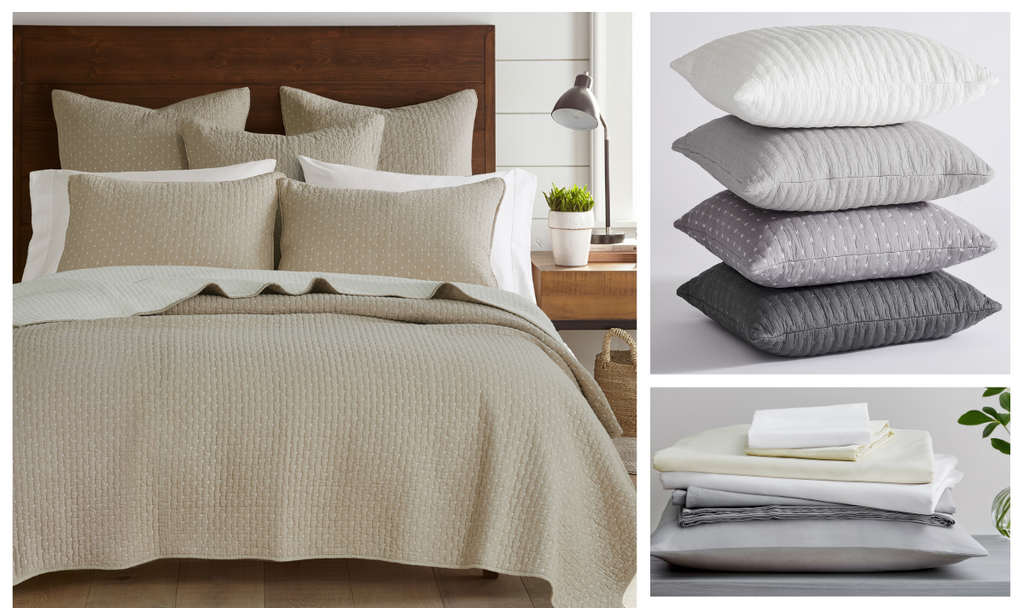
Linen: Immersing in the Natural, Lived-In Aesthetic
Linen, made from the flax plant, is revered for its natural, lived-in aesthetic and exceptional coolness and breathability. It is highly durable and becomes softer with each wash. Linen's moisture-absorbing and evaporating capabilities make it an ideal bedding choice for warm climates or hot sleepers. Its rustic appearance and tactile quality add a distinctive charm to bedroom decor.
When considering linen, it's essential to note that linen may wrinkle more than other fabrics, adding a relaxed and lived-in charm to your bed. If you like the feel or other qualities of linen but want a crisper look, you will need to iron your linen bedding.
“I've been loyal to washed linen for at least 10 years. I've tried tons of different bedding, and when I found washed vintage linen, I was hooked! I love its natural and effortless look and feel. It doesn’t need to be pressed perfectly either.”Jenni Kayne, fashion designer and author of Pacific Natural: Simple Seasonal Entertaining
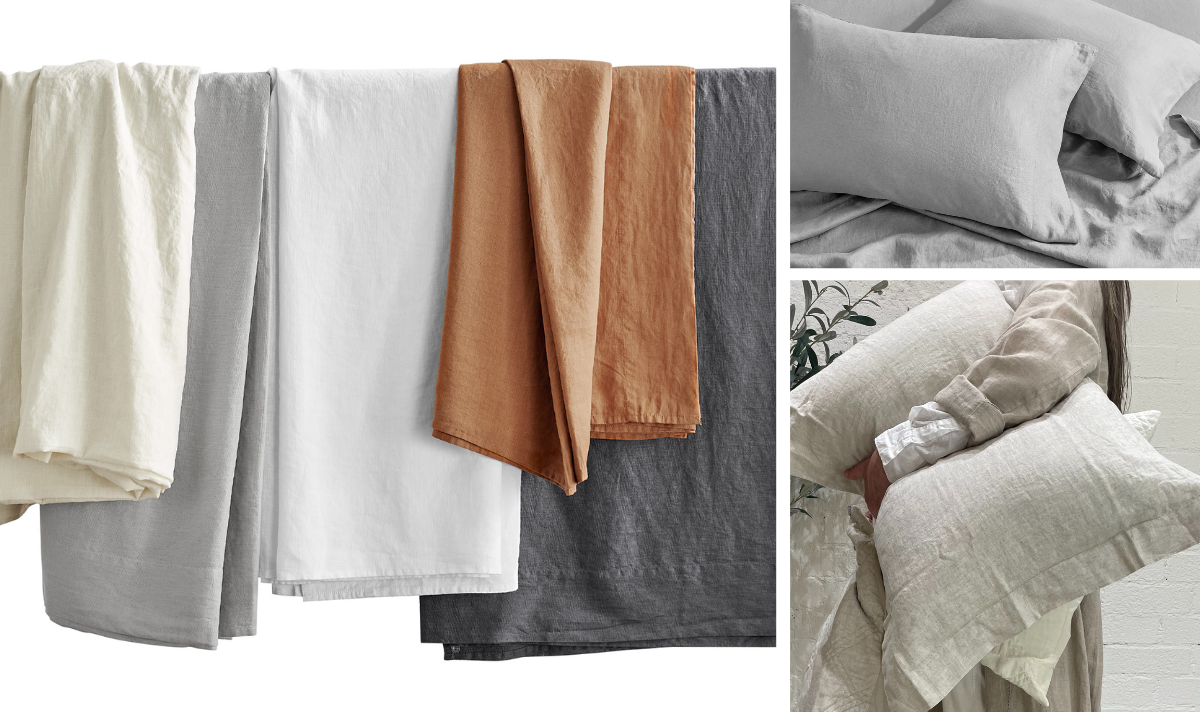
Microfiber: Affordable Durability with a Soft Touch
Microfiber is a synthetic fabric, typically made from finely woven polyester. It's known for its affordability, durability, and resistance to wrinkles and stains. Microfiber sheets can mimic the feel of natural fibers but with less breathability, which might not be suitable for those who tend to sleep hot. However, its lightweight nature and soft texture make it a popular choice for budget-conscious consumers looking for easy-care bedding.
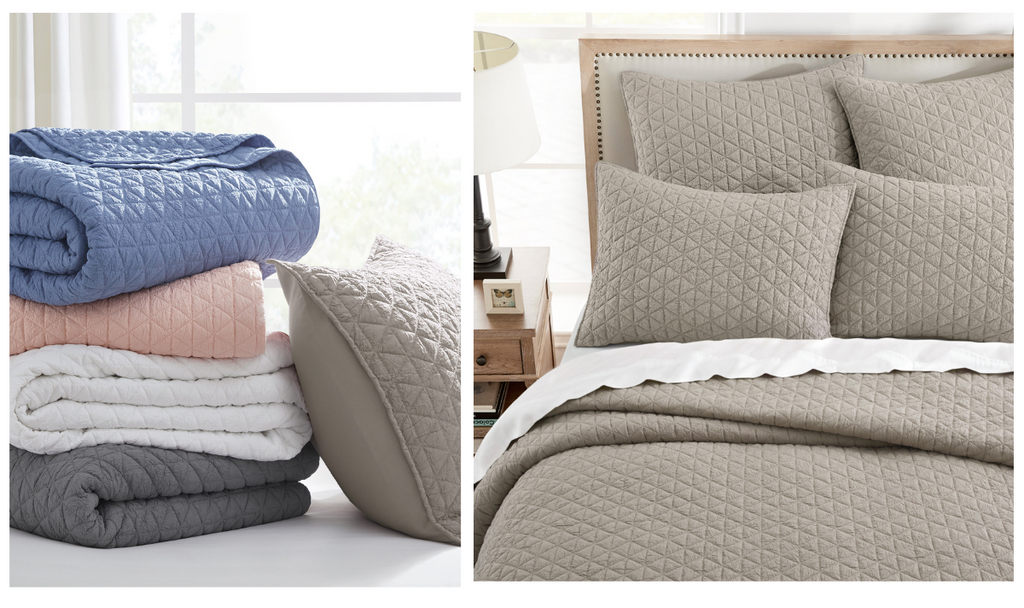
Tencel (Lyocell): Sustainable Luxury and Gentle on the Skin
Tencel is a brand name for lyocell, a fiber made from the wood pulp of eucalyptus trees. This fabric stands out for its sustainability, moisture-wicking properties, and gentle touch on the skin. Tencel sheets are smooth, breathable, and have a slight sheen, similar to silk. They're ideal for sensitive skin due to their hypoallergenic properties and excel in thermal regulation.

Bamboo Bedding: Eco-Friendly Coolness and Moisture-Wicking
Bamboo bedding is made from the pulp of bamboo grass, creating a fabric that's soft, breathable, and environmentally friendly. Bamboo sheets are known for their ability to stay cool to the touch and wick away moisture, making them perfect for hot sleepers. Additionally, they possess natural antibacterial properties, which can be beneficial for those with allergies or sensitive skin.
Silk for Ultimate Comfort: Luxurious, Breathable, and Hypoallergenic
Silk, a protein fiber produced by silkworms, is luxurious, smooth, and has a natural sheen. Silk bedding is highly breathable, temperature-regulating, and hypoallergenic, making it a premium choice for those seeking ultimate comfort and elegance. Silk's smooth surface can also be gentle on hair and skin, reducing friction and preventing creases and breakage.
Silk bedding embodies elegance and sophistication, making every night's sleep a sumptuous experience. Silk can be woven in different ways and silk fabric is characterized by its momme weight. The higher the weight, generally the better quality the silk (usually because it is a denser weave). So, like all other fabrics not all silk is the same. Take the time to feel the product yourself, silk with a lower momme weight will often feel rougher than better quality silk.
In order to maintain the softness and durability of silk, it can require more delicate care than other fabrics.
Satin Bedding: Glossy Smoothness for a Touch of Wellness
While satin can be made from a variety of fibers, including silk, polyester, and nylon, it refers more to the weave than the material itself. This weave results in a glossy surface and a dull back, providing a silky-smooth feel. Satin bedding can offer a similar luxurious feel to silk at a more accessible price point, depending on the fibers used. It's important to note that synthetic satin might not offer the same breathability as natural silk.
What Texture Is Right For Me?
Once you have chosen your fabrication, you might want to think about texture. If you are choosing cotton bedding, for example, you will have to think about whether you prefer the crisp coolness of sateen or the soft luxury of percale. You will also have to consider thread count (for more information on that journey, read out blog on finding the thread count that is right for you).
But there are potentially other choices. We are going to highlight just a few of the textures that are particular favorites for us at the moment.
Flannel Bedding for Cozy Nights: Velvety Warmth and Comfort
Flannel has been made since the 17th century and likely originated in Wales. Though it was once made of wool, by the 20th century, flannel was more commonly made with cotton. It can be made with many different yarns, so if you are fussy about what is on your bed, pay attention to your product's content label.
A gentle and moderately heavy textile, flannel possesses a fuzzy texture on one or both sides, attributed to either brushing or its distinctive loose weave. This velvety finish contributes to its snug and comforting touch, ideal for providing warmth throughout the winter. Flannel often comes in checkered, plaid or tartan patterns and is a popular choice for winter bedding. We particularly love the Levtex Spencer Flannel Duvet Set and matching sheets - they are the perfect texture for those cold winter nights!
When choosing quality flannel bedding, look for a heavier weight if you can, as this indicates a denser fabric that promises superior warmth and durability. Opt for pure cotton flannel for a breathable yet insulating experience. Pay attention to the brushing technique – a double-nap or triple-nap process enhances the softness and loft of the fabric. As you wrap yourself in the plush layers of well-chosen flannel, you'll find yourself drifting into a cocoon of comfort, making it the perfect choice for those seeking a restful and inviting winter retreat.
Velvet Bedding: Plush Luxury and Timeless Elegance
Velvet's origins can be traced back to the early history of textile production, with some of the earliest evidence of velvet-like fabrics dating back to ancient Egypt! By the 13th and 14th centuries, the craft had spread to Europe, with Italy becoming a prominent center for velvet production, prized for its high-quality velvet, which was made using silk, making the fabric a luxury item favored by the aristocracy and the wealthy. Since then velvet production has become more accessible and less expensive, allowing for the creation of velvets from different fibers, such as cotton and synthetic materials, broadening its use and appeal. Despite these changes, velvet has retained its association with luxury and elegance to this day
Velvet bedding can immediately transform your bedroom into a haven of plush comfort and sophistication. This bedding option not only adds a touch of glamour to your sleep sanctuary but also provides an extra layer of warmth during colder months. When considering velvet bedding, take note of the material composition, as pure cotton or blends with synthetic fibers can influence both the feel and durability of the fabric. It's crucial to be mindful of the weight of velvet bedding, as heavier options offer a more substantial and cozy experience but you don't want your bedding to be too heavy!
The Levtex Home Ellora Plum Velvet Collection is the perfect example of sophisticated luxury with easy maintenance. The soft, crushed polyester velvet is quilted with a cotton-rich filler making it the perfect weight for any bed. Machine washable, it is extremely easy to care for. While synthetic velvets are often machine washable, silk and cotton velvets often require special care so, if easy care is important to you, check the wash instructions carefully.
Waffle Weave Bedding for Texture: Distinctive Pattern and Comfort
Waffle bedding refers to bedding made from textiles characterized by a distinct textured pattern, resembling a waffle's honeycomb structure. This design is achieved through a specific weaving technique that creates raised squares or rectangles, giving the fabric a three-dimensional appearance. The waffle weave is not only visually appealing but also functional, contributing to the fabric's unique properties.
The waffle weave has a long history and its origins can be traced back to the 13th century. Waffle bedding is typically made from cotton, but it can also be produced from other materials, including linen, microfiber, and blends that combine different fibers. The choice of material affects the bedding's feel, durability, and care requirements. Cotton waffle weaves, for instance, offer breathability and softness, making them ideal for comfortable bedding.
We are absolutely in love with Levtex Home's waffle bedding options - and we have more than just one. Mills Waffle is a thicker weave waffle. Initially introduced as quilt in a variety of colors and sizes, the collection has since been expanded to include bedspreads, throws and decorative pillows with duvet covers coming soon! Cloud Waffle is a slightly lighter weave but just as soft and luxurious and was initially offered as a duvet and comforter collection. This collection is also expanding due to popular demand.
Quilted and Stitched Bedding: Artisanal Charm and Endless Options for Mattress Wellness
Quilting, the process of sewing two or more layers of fabric together to create a padded material, has been practiced for thousands of years. The history of quilted bedding is intertwined with the history of quilting itself, which includes not just bed coverings but also clothing and other textile goods.
The earliest known quilted garment dates back to around 3400 BCE, discovered in a Mongolian cave. However, the art of quilting as we understand it today—particularly in the context of bedding—began to develop more significantly in the medieval period in Europe. During this time, quilts were used for warmth and insulation beneath armor by knights, and this technique eventually transitioned into domestic use for bed coverings.
“I like to use very lightweight materials specifically, a lightweight cotton quilt. And I always fold it back with the top sheet folded down on top of that.”Shawn Henderson, interior designer
Quilts have several advantages that make them a popular bedding choice:
- Warmth and Comfort: The layers of fabric and batting provide excellent insulation, making quilts ideal for keeping warm during colder months.
- Versatility: Quilts can serve multiple functions—as a bed covering, a throw for the living room, a picnic blanket, or even as a piece of art to be hung on the wall.
- Durability: High-quality quilts are durable and can last for many years, often becoming family heirlooms passed down through generations.
- Personal and Cultural Expression: Quilts often reflect the personal style of the maker or the cultural heritage of a community. They can carry historical significance, represent familial ties, or celebrate cultural traditions.
- Aesthetic Appeal: With endless possibilities for patterns, colors, and designs, quilts can add a unique and personal touch to home decor.
Quilts can often have a textural element added to them in the form of stitching or dimensional appliqués. In this way, quilts provide a way of providing an extra layer of texture and interest to a bedroom. Our favorite example is the Levtex Home Cross Stitch Collection. Although the quilt itself is simple, elegant and contemporary, the cross-stitching across the surface of the quilt adds dimension and interest that elevates the look of any bedroom. Available in multiple colors, the collection has been expanded to include pillows and bedspreads.
We hope we have helped you make some sense of the myriad types of bedding you can choose. Whether you choose the artisanal charm of cross-stitch, the warmth of waffle, the luxury of percale, the natural allure of linen or the plush opulence of velvet, each option presents a unique blend of characteristics, catering to different preferences and needs.
As you embark on the quest for the perfect bedding, consider the climate, your tactile preferences, and the aesthetic that resonates with your personal style. From the timeless elegance of cotton bedding to the cozy embrace of flannel and the opulence of silk, we hope we have made your journey easier through the rich tapestry of materials and textures a little easier.
FAQ
What are the most common types of bed sheets?
Cotton sheets are the most common types of bed sheets, widely recognized for their breathability, softness, and durability. With various weaves and qualities available, you can choose between options like percale and sateen to enhance your sleep experience.
What is the most luxurious bedding material?
Silk stands out as the epitome of luxury in bedding materials. Derived from silkworms, this protein fiber offers a smooth surface, natural sheen, breathability, and hypoallergenic properties, providing the utmost comfort and elegance for a luxurious night's sleep.
Which bedding material keeps you the coolest?
Bamboo bedding is renowned for being the coolest material. Crafted from bamboo grass pulp, these sheets are not only soft and breathable but also environmentally friendly. With a cool-to-the-touch feel and moisture-wicking properties, bamboo sheets are the ideal choice for those who tend to sleep hot.
How do I decide between sateen and percale cotton bed sheets?
The choice between sateen and percale cotton bed sheets ultimately depends on personal preference. Sateen offers a silky feel and subtle sheen, while percale provides a crisp, cool touch. Consider your tactile preferences and the desired aesthetic to enhance the overall appeal of your bed.
Are synthetic velvets machine washable?
Yes, synthetic velvets are generally machine washable. However, it's essential to note that silk and cotton velvets may require special care. Always check the washing instructions carefully to ensure the longevity and proper maintenance of your velvet bedding, adding a layer of quality to your sleep sanctuary.
Written by Michael Levin
References
1. The best bed linens for every design style on Elle Decor - https://www.elledecor.com/design-decorate/a22943008/best-bedding-for-every-design-style-matouk
2. These Are the Best Bed Sheets, According to Interior Designers on Vogue - https://www.vogue.com/article/bed-sheets-according-to-interior-designers
3. How to style the perfect bed, according to an interior designer on Elle Decor - https://www.elledecor.com/design-decorate/interior-designers/a37676193/how-to-style-the-perfect-bed-according-to-shawn-henderson/

 Written by
Written by 